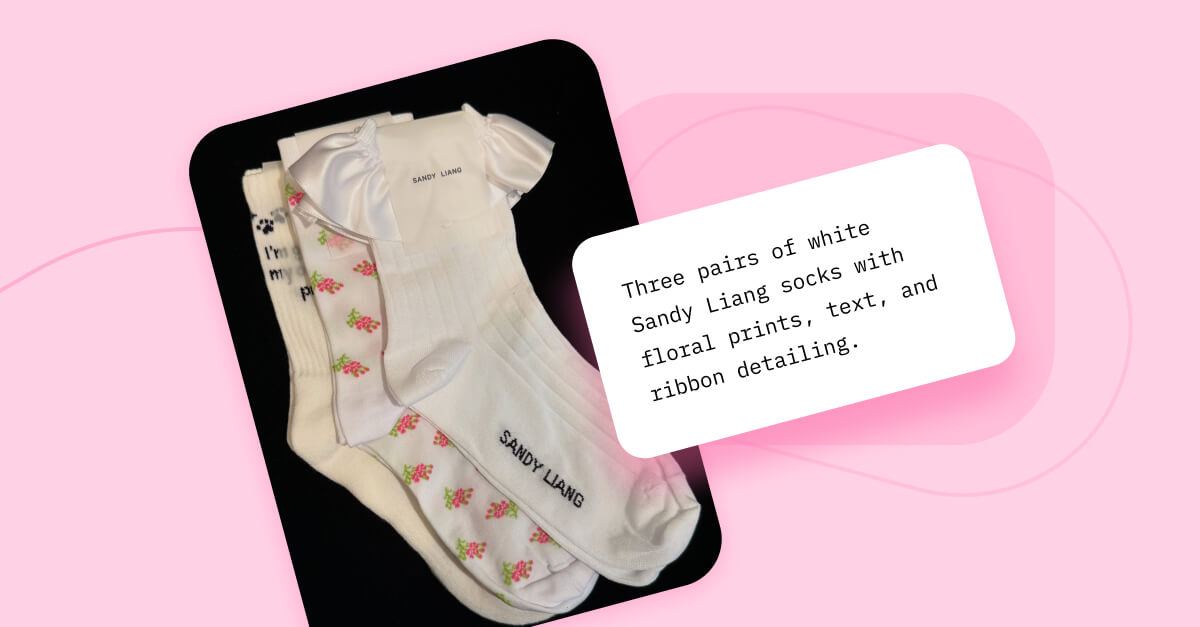Use Social Media Lead Generation To Grow on Every Platform
Social media is more than an organic marketing tactic that bring in valuable leads, data and more to help you refine your lead generation strategy.
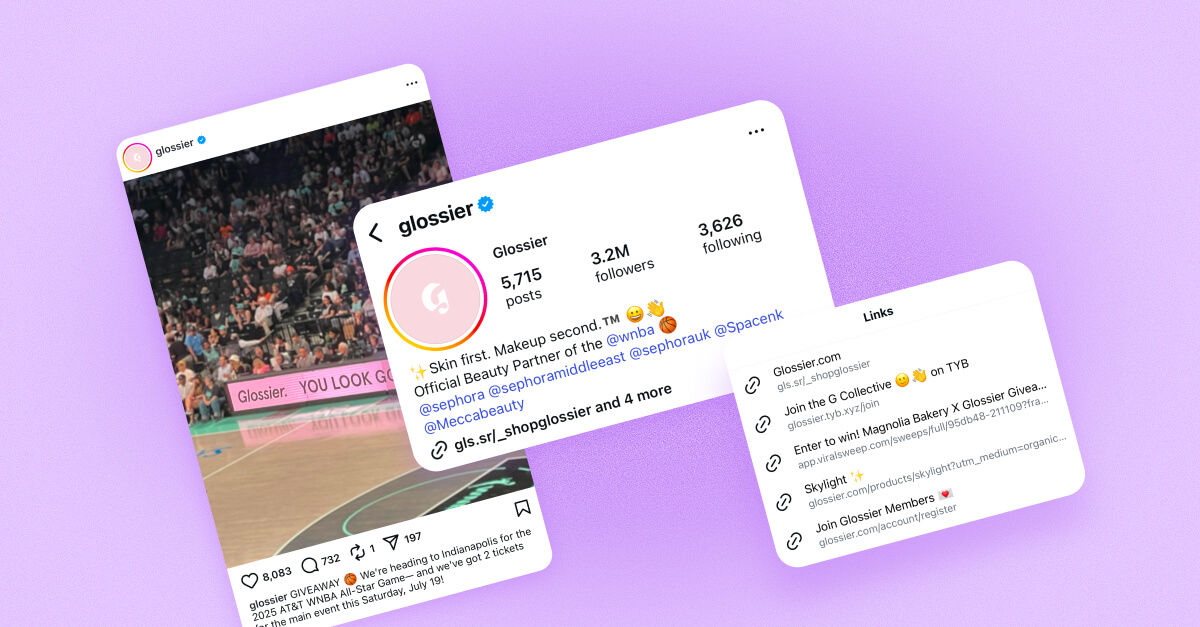
Contents
What Is Social Media Lead Generation?Social Media Lead Generation StrategiesLead Generation Tips for InstagramLead Generation Tips for FacebookLead Generation Tips for TikTokLead Generation Tips for LinkedInLead Generation Tips for X Top 3 Social Media Lead Generation ToolsSocial Media Lead Generation FAQsSocial media is a great place to build an organic community, grow brand awareness and promote your brand through paid advertising; however, if you’re not using social media for lead generation, you’re missing a huge opportunity.
According to Wiser Notify, 68% of marketers say social media helps them generate leads and 66% generate high-quality leads while spending a minimum of 6 hours on social media marketing. What do these numbers tell us? With the right timing, tactics and execution, social media can help you reach your marketing goals beyond the obvious.
TL;DR:
- With the right timing and tactics, social can do more than build awareness, it can generate high-quality leads that fuel your sales pipeline.
- Use organic content to test messaging and creative, then apply those insights to paid campaigns for stronger targeting and bigger ROI.
- An optimized social profile acts as a constant lead magnet by directing followers to landing pages, sign-ups and key product information.
- From shoppable posts on Instagram to LinkedIn targeting tools, each platform offers unique ways to capture and nurture leads.
- Solutions like HubSpot, Zapier and even native platform features streamline your lead generation tactics and strategy.
What Is Social Media Lead Generation?
Social media lead generation is the practice of using your social media profiles to attract potential customers to your business and collect information about your users to better market to a specific target audience in the future. Essentially, social media lead generation aims to turn followers into prospects you can nurture through organic or paid targeted messaging.
Yes, both organic and paid content contribute to social media lead generation. Organic posts are often the first step to build awareness among your audience and encourage users to take the next step to convert, whether it’s clicking an article on your website, signing up for a newsletter or finally taking the plunge to purchase a product or service. This organic data helps refine your lead generation tactics without sacrificing your social media budget. For example, are many Gen Z and millennial users interested in specific product posts? You can create an ad campaign centred around these products, targeting this particular user niche.
These organic tactics lead into paid lead gen tactics, too. Organic data helps you try out different visuals, copy and calls to action with less risk. Plus, you can refine which demographics you’re reaching with impressions, who engages with certain content and what content might not be the most impactful to put your lead generation budget behind. These insights help you allocate spend to the right audience segments and creative, so you can reduce wasted impressions and increase the likelihood of conversion. Over time, you’ll create a workflow where organic and paid content continuously inform each other to enhance your lead generation strategy.
Social Media Lead Generation Strategies
You can add lead generation tactics to your social strategy in several ways. The key is to make it easy for your audience to take the next step; whether that’s signing up for a newsletter, downloading gated content or requesting a demo. Here are a few approaches to consider:
1. Optimize Your Profile
Your social media profile is a great place to capture leads. Use a link in bio tool to direct followers to key landing pages like sign-up forms, product pages, event registration and even your other social media profiles. If you’re a brick and mortar business with one central location, add location details to help customers find you. A well-optimized profile can work as a constant lead magnet, helping new people discover your brand, find products and more.
Glossier includes a brief description of their brand, relevant links in bio, the handles of the retail stores their products are carried and the fact that they’re an official beauty partner of the WNBA. This combination provides clear, useful information at a glance and makes it easy for followers to explore their brand online.
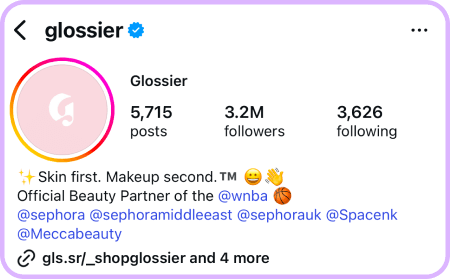
2. Create Targeted Ads
Paid campaigns let you put the right offer in front of the right people at the right time. With targeting tools available on most platforms, you can segment audiences by interests, behaviors and demographics. This precision ensures your lead-generation ads reach users who are most likely to take action, whether downloading a resource, booking a demo or making a purchase.
In this example, skincare brand Dr. Melaxin taps into creator UGC to repurpose as a paid advertisement. Beyond using native platform targeting, working with creators or repurposing UGC from influencers you know resonate with your target audience is a great way to tailor your ads to increase reach.
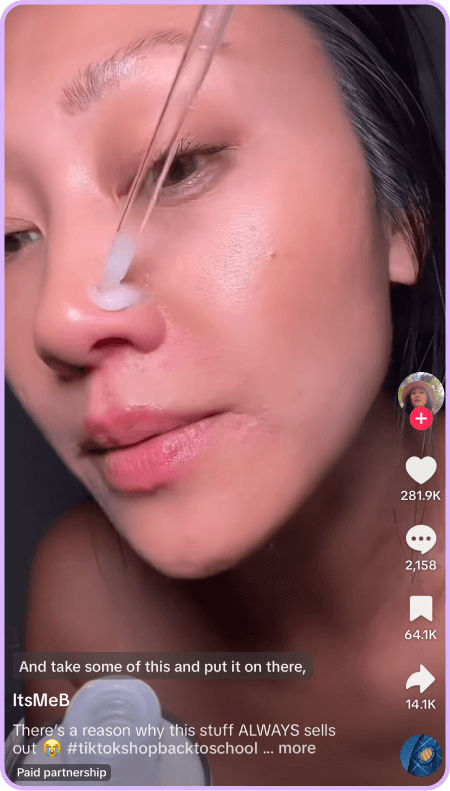
3. Tap into Social Proof
Social proof is a powerful way to promote your brand authentically. Social proof harnesses your most impactful UGC to show how others use your brand’s products or services daily. In a competitive world, social proof is the difference between creating eye-catching content and having that content persuade a customer to take action.
Loving Tan taps into social proof to showcase pop star Tate MacRae wearing their Bronze Shimmer cream during a live performance, a great way to show its efficacy during an active live performance and how it appears on the skin while highlighting a celebrity partnership.
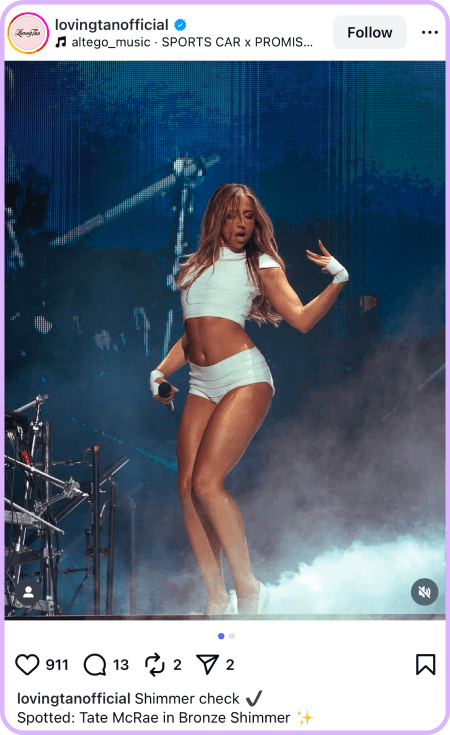
4. Create Custom Landing Pages
Custom landing pages are one of the most effective ways to personalize the experience for your target audience. However, it’s likely not feasible to make multiple edits to your evergreen website content in the day-to-day, especially if you’re attempting to target multiple audience segments.
Custom landing pages let you highlight specific product pages, event sign-ups or any other information or conversion you’re aiming for this audience to take. Since they’re not linked to your overall site map, you can take small liberties with design, verbiage and placement; but be mindful to stay true to your brand identity.
Olipop uses a custom landing page on its TikTok profile, sharing a promotion that new and existing customers can use in-store. This is a great way to provide extra value and boost brand loyalty.

5. Use Shoppable Images
Despite platforms like Instagram removing their dedicated shopping tab, shoppable posts are a mainstay of TikTok and Instagram. Shoppable media lets users click and see a brief item description, price and link to purchase directly from the app. This is a great way to add another conversion point, eliminating any friction that might appear from a user navigating away from your post to find the item on your website.
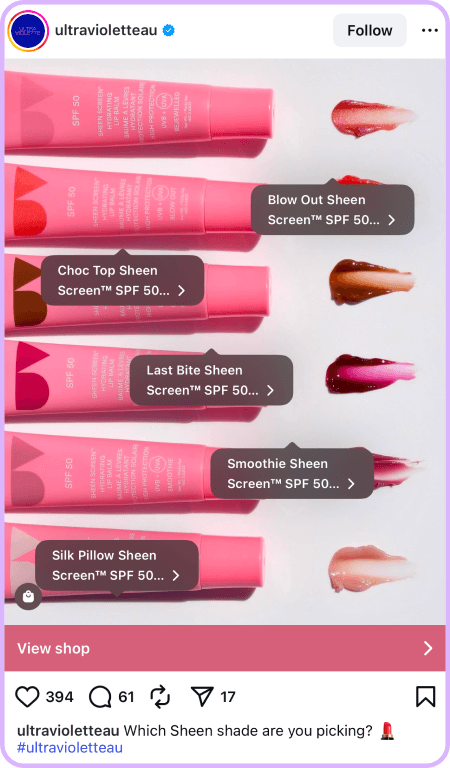
Lead Generation Tips for Instagram
Instagram is a great platform to enhance lead generation, particularly with the recent ability for creator and business accounts to surface in Google’s SERP. What does this mean for brands? Your posts are now discoverable for anyone searching your brand, product or even similar products.
Explore All Shoppable Elements
If you’re going to share a product post, why not have users shop directly from the post? This reduces the chance of users dropping off during the buyer funnel (think users navigating to your link in bio or visiting an external webpage) and potentially navigating away from your brand entirely.
Alternatively, a link in bio tool like LikeShop is a great way to direct users to product pages, custom landing pages and even product information. Since every post can’t be shoppable, you can sell on Instagram with LikeShop and create as many touchpoints as possible to encourage sales.
Include Strong CTAs
A call-to-action can feel ‘salesy’, but doesn’t have to. Aside from encouraging a user to take a specific action, CTAs help summarize or wrap up whatever your post contains or what you might be talking about in a video. Did you spend 35 seconds discussing how a makeup product can be used multiple ways? Be sure to mention where users can get it in your caption or with a text overlay.
Lead Generation Tips for Facebook
Facebook has long been a destination for paid ads, boosted posts and ultra-targeted content. Depending on your target demographic, Facebook is a great tool to learn more about who engages with your organic and paid content. It also lends itself well to paid remarketing campaigns.
Spark Conversations
A longtime benefit of Facebook is its groups — they’ve developed from fun, silly signals of things you’re interested in (longtime users should be well aware of the ‘I step on crunchy leaves’ group) into thriving hubs where people talk, share and connect. Starting a Facebook group based on your brand, product or participating in relevant conversations where your brand organically engages with others helps boost awareness, and in turn, can generate leads through increased visibility and engagement.
Create Lead Ads
If you’re interested in generating leads through Facebook or Meta in general, lead ads are a must. Lead ads help you run campaigns solely focused on lead generation with an ‘instant form’ for users to fill out, which are form fields that appear without the need to leave the platform. Instant forms include:
- Fields specific to your lead generation goals: More volume (the default for higher amounts of leads), higher intent (targeted to users seeking a specific product or service like a moving service) and rich creative (this lets you personalize the form field with photos, carousels and video).
- Depending on your goals, you can use the following form types: More volume (the default form type), higher intent and rich creative.
- Intro: Description of what the user can expect after completing the form.
- Privacy policy: A privacy policy is required to use instant forms, typically using the URL from an existing privacy policy on your website.
- Call to action (CTA): A button or text that encourages users to keep engaging with your business after their form submission — think a link to the next ideal stage in the buying journey, or a link to a similar product or service featured in your ad.
Lead Generation Tips for TikTok
TikTok is for so much more than organic content, with global ad revenue projected to reach $33.1 billion in 2025, up from $23.6 billion. This also makes it a powerful destination for lead generation — here are some tips to enhance your efforts.
Use the Right Hashtags
Using the right amount (3-5) and combination of TikTok hashtags can expand your reach and help your content and brand be found by the right audience. Using relevant hashtags can help TikTok’s algorithm categorize your content, bringing your brand to new audiences. While you can’t add hashtags to Lead Generation Ads, you can turn these into Spark Ads if desired and add hashtags for enhanced reach.
Run the Right Ads
Like Meta, TikTok can generate leads through its TikTok Lead Generation service. TikTok is ripe for organic engagement, but this doesn’t mean you should underestimate the power of its ads. TikTok users are 1.3X more likely to sign up for something within an ad than on any other social platform, and 57% of users are more likely to purchase from a brand after seeing their TikTok Lead Generation ad.
Nina Ricci used Lead Generation ads to target a younger audience and promote their new fragrance, Nina Rose, and saw an 84% decrease in cost-per-lead (CPL) and a 1.5% click-through rate (CTR). Users who submitted a short form received a fragrance sample, and Nina Ricci increased their leads while encouraging future sales.
Lead Generation Tips for LinkedIn
LinkedIn is more than a destination to showcase your resume; it’s great for connecting with decision makers and transforming professional relationships into qualified leads. Strategically using its features guides these connections from first touch to conversion. Here are some tips to maximize your lead generation efforts on LinkedIn.
Join Conversations
If there’s a professional conversation happening, there’s a good chance it’s happening on LinkedIn. Chime in on relevant posts, join relevant Groups and connect with others to increase your brand’s visibility and develop your thought leadership. This helps keep your brand top-of-mind for future employees, customers and potential partnerships with other brands.
Create Targeted Organic and Paid Posts
There are many different LinkedIn audiences, from people looking for work to CEOs to brands. Targeted posts are only shared with audiences that fit a specific criteria, which makes the most of your ad spend and ensures the audiences that matter most see your post. LinkedIn also offers an impressive number of targeting criteria, including:
- Location: Permanent or recent (location determined by member account number or IP address).
- Language: Be sure to write your ad in your target language, as LinkedIn does not translate ads.
- Company Category: Target companies from specific groups, like the S&P 500.
- Company Industry: Targets users based on their current company.
- Demographics: Age, gender, education, job experience and interests.
Lead Generation Tips for X
X differs from other social platforms with its ability to include clickable links in your posts. This can make sharing website content, products and more easier and less time-consuming. Here are some other tips to generate leads on X:
Repurpose Website Content
While simply sharing a link with a short message doesn’t necessarily translate on platforms like Instagram or TikTok, X lets you share links with a preview, which also helps you make the most of your header image. Share links to articles and blog content (remember to add UTM parameters to measure traffic), product pages, interviews, podcasts and any other content that draws users in and entices them to ‘read more’.
Post Regularly
Regularly posting to X keeps your brand top of mind and helps you build authentic relationships that foster long-term loyalty and interest. Consistent engagement can spark conversations, position your brand as a go-to voice in your industry and drive more form fills. Over time, this steady presence creates a sense of community among followers, making them more likely to convert and advocate for your brand.
Top 3 Social Media Lead Generation Tools
The right tools can make social media lead generation faster, innovative and more effective. From tracking audience behavior to streamlining conversions, these platforms help you easily capture and nurture prospects. Here are three that stand out for delivering real results.
1. HubSpot
HubSpot is a popular lead generation and CRM tool for brands. It lets marketers create custom landing pages, forms and ads, manage contacts and access reporting dashboards to measure the impact of their lead generation tactics on their overall goals and help them capture and convert traffic from every channel. With reporting dashboards, you can track contacts through the entire buyer journey, segment audiences for targeted campaigns and view performance.
2. Zapier
Zapier helps you integrate applications and automate your workflows, making it a great tool if you have more than one existing lead generation tool and want to streamline certain functions into one platform. The platform lets you create ‘zaps’, which can trigger actions from other platforms; for example, let’s say someone fills out a Facebook lead generation ad, you can create a ‘zap’ for this contact so it’s automatically added to your HubSpot contact list.
3. Native Social Platforms
You can’t underestimate the impact of native social platforms. They often offer sophisticated targeting options and the ability to manage your budget on the platform. Social networks like Facebook, Instagram, LinkedIn and TikTok are constantly refining their ad tools with advanced audience targeting based on demographics, interests, behaviors and even past interactions with your brand. These built-in solutions make it easy to control spend with flexible budgeting and bidding options so you can invest in what works and divest from what doesn’t. Native analytics can also offer insight into which ads and creative drive the most conversions, particularly useful if you’re focused on one central platform.
Social Media Lead Generation FAQs
What is the 80/20 rule when promoting through social media?
The 80/20 rule in social media marketing suggests that 80% of your content should inform, educate or entertain your audience, while 20% can directly promote your products or services. This balance helps build trust, keeps followers engaged and prevents your feed from feeling overly sales-focused. Prioritizing value-driven content encourages long-term relationships and makes promotional posts more effective.
What is a paid social lead?
A paid social lead is a potential customer you capture through a paid social campaign. Typically, the user clicks the ad and completes a form, providing details such as their name, email or phone number. Once collected, you can segment these leads into targeted groups, like first-time customers or specific demographics, like millennials, to tailor your follow-up and increase the chance of conversion.





